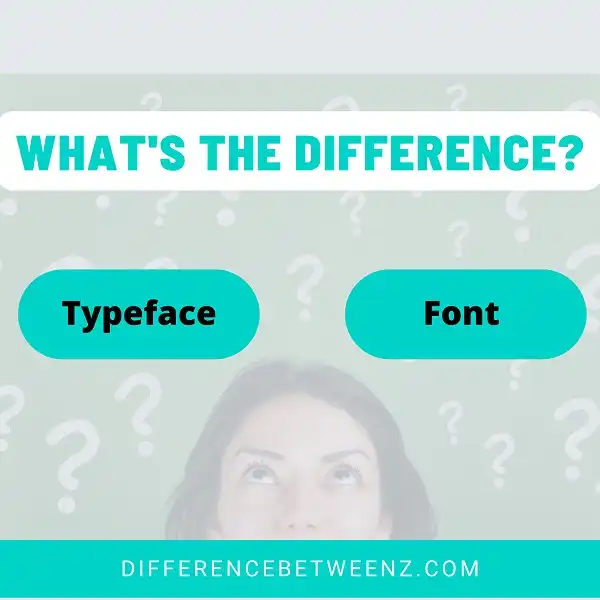Typeface and font. These words are often used interchangeably, but they have different meanings. Typeface refers to the design of a letterform, while font refers to a specific weight, size, and style of a typeface. This can be confusing for beginners, so let’s take a closer look at the differences between typefaces and fonts. We’ll also explore some of the most popular typefaces and fonts used today.
What is a Typeface?
A typeface is a family of fonts that share certain similarities, such as strokes, serifs, or proportional widths. Typefaces are used to set the text of documents, and they can be divided into two main categories: Serif and Sans Serif. Serif typefaces are often considered to be more formal or traditional, while Sans Serif typefaces are more modern and streamlined. Typefaces can also be further classified by their weight, such as light, bold, or black.
The size of the typeface is another important factor to consider when choosing a font for a document. Typefaces are typically measured in point size, which corresponds to the height of the characters in the font. Larger typefaces are usually used for headings or titles, while smaller typefaces are used for body text. When selecting a typeface for a document, it is important to consider the purpose of the document and the tone you want to convey. Typefaces can have a big impact on how your audience perceives your message, so choose wisely!
What is Font?
The font is a digital representation of text that can be displayed on a screen or in print. A font consists of a family of characters, each of which has a specific size, weight, and style. Fonts are used to create patterns or images on a page, as well as to provide readability for text. There are two main types of fonts: serif and sans serif. Serif fonts have small lines attached to the ends of their strokes, while sans serif fonts do not.
Fonts can also be classified as decorative, script, or symbols. Decorative fonts are designed for display purposes only, while script and Symbol fonts are designed for specific purposes such as mathematical equations or foreign languages. Fonts are an important part of design and communication, and the right font can make all the difference in conveying the correct message.
Difference between Typeface and Font
Typeface and font are often used interchangeably, but they actually refer to two different things. A typeface is a specific design of letters, numbers, and other characters. For example, Times New Roman is a typeface. A font is a file that contains a specific typeface. In other words, a font is what you use to create text in a document or website.
Because there are thousands of different typefaces available, designers often create their own fonts that contain only the characters they need for their project. This helps to keep files small and efficient. Typeface and font may seem like minor details, but they can actually have a big impact on the overall look of a project. By understanding the difference between these two terms, you can ensure that your text looks exactly the way you want it to.
Conclusion
To sum up, typeface and font are terms that are often used interchangeably but have different meanings. A typeface is a collection of fonts that share common design features, while a font is a specific weight and style within a typeface. When selecting the right typeface for your project, it’s important to consider how the fonts will be used and what mood you want to evoke. With so many options available, it can be tricky to choose the perfect one, but our guide should make the process a little bit easier.


